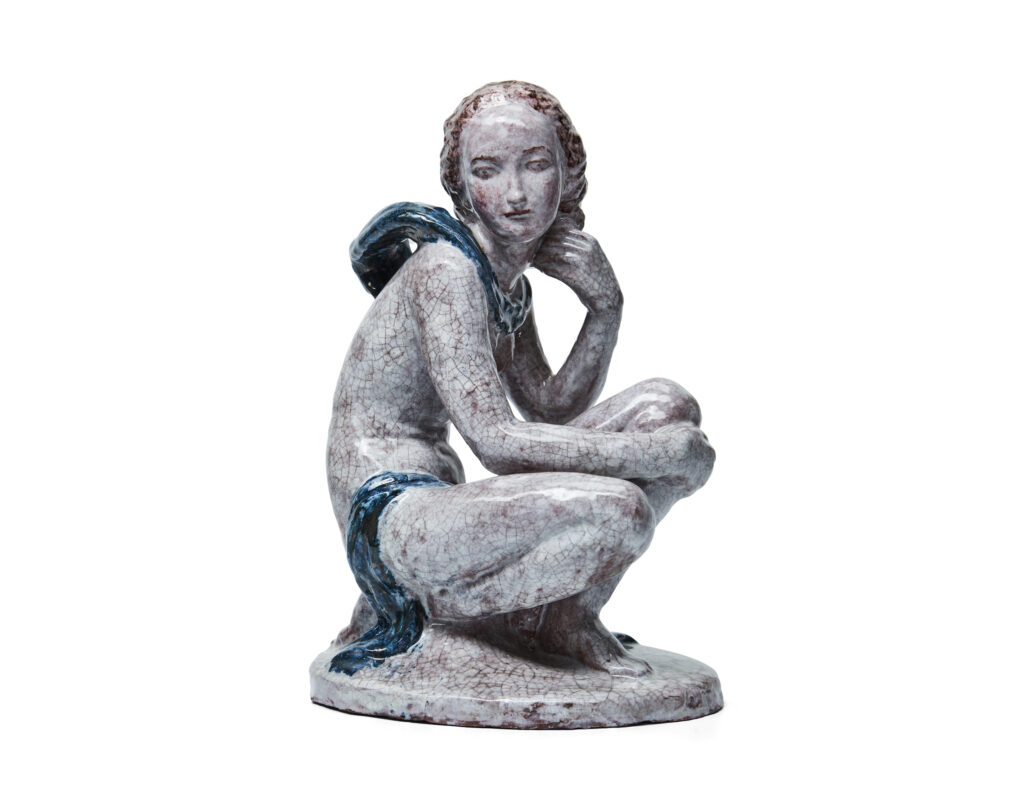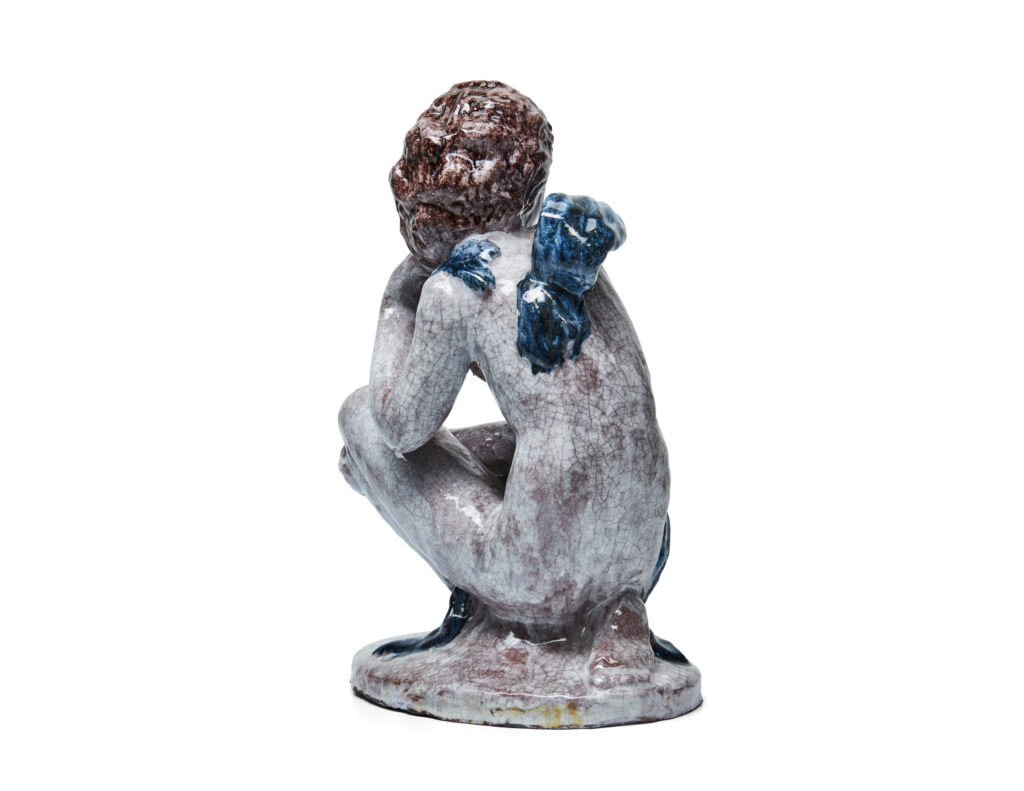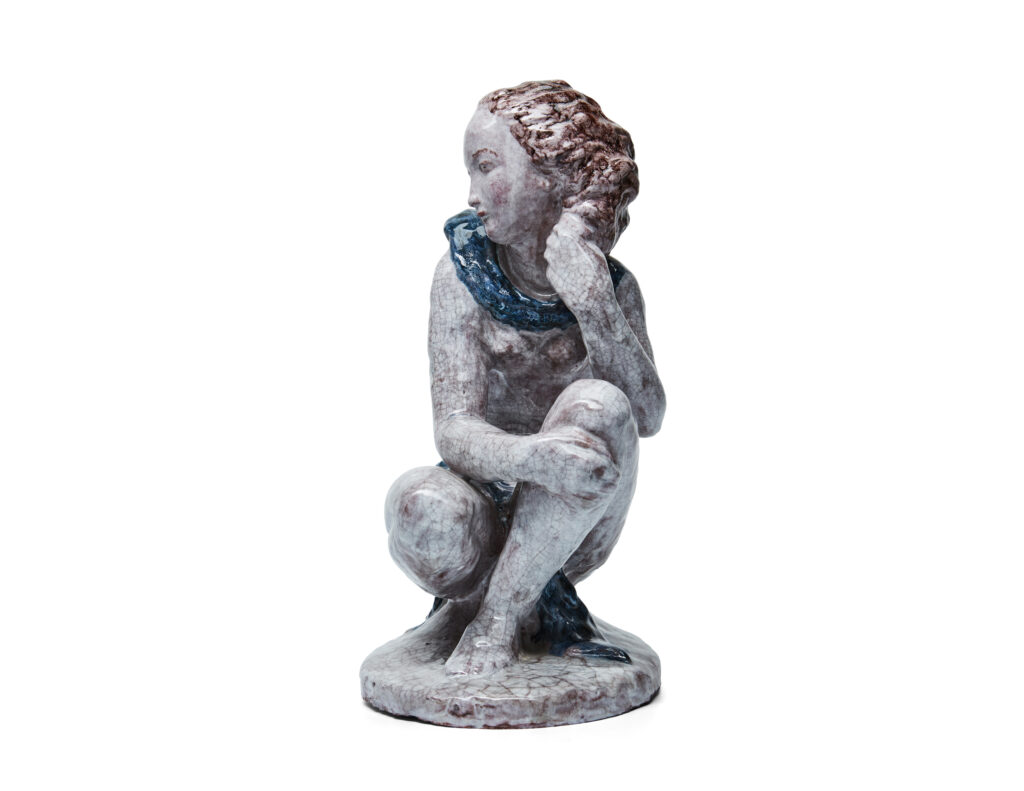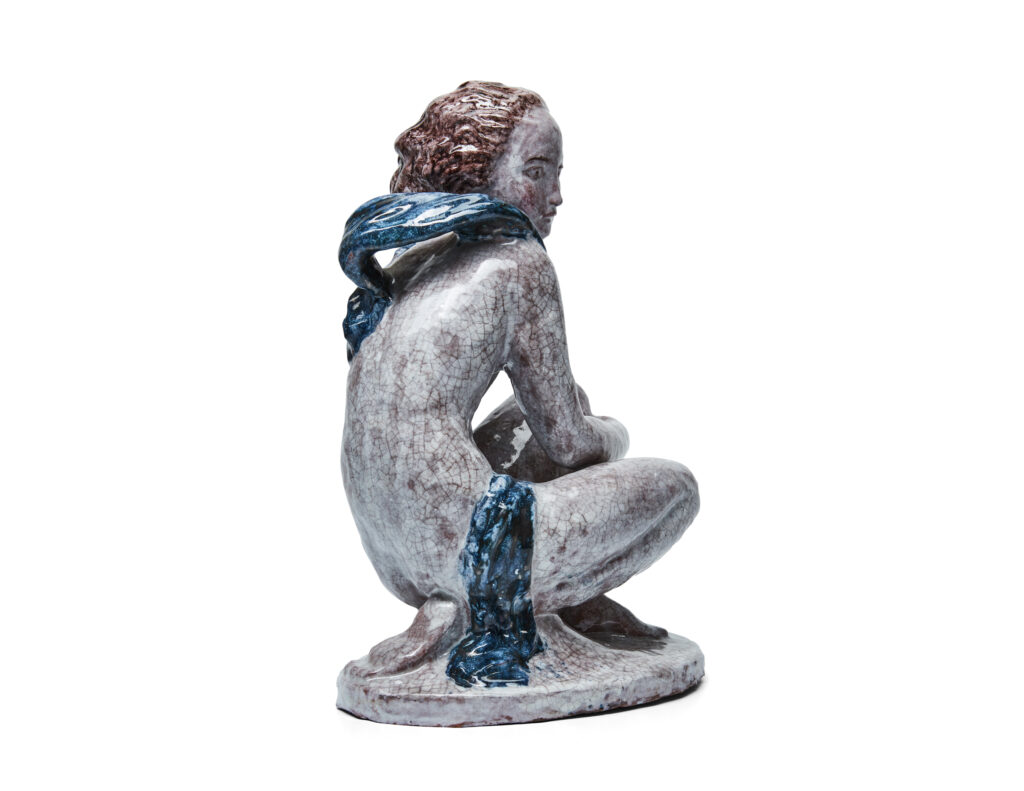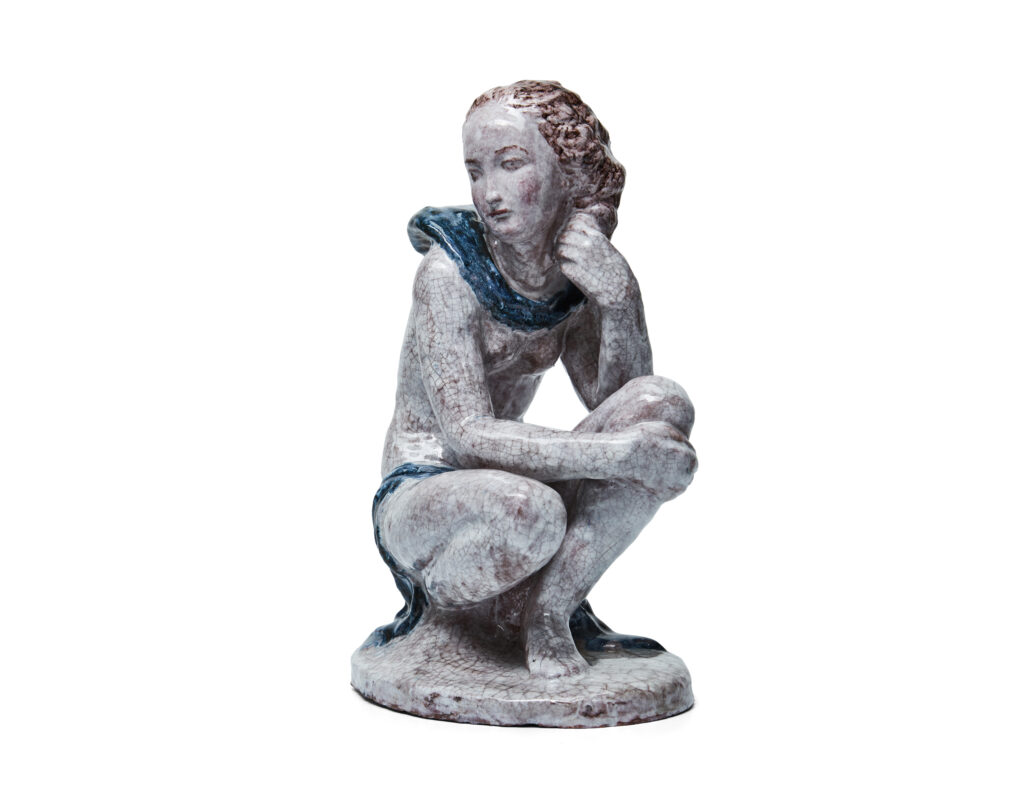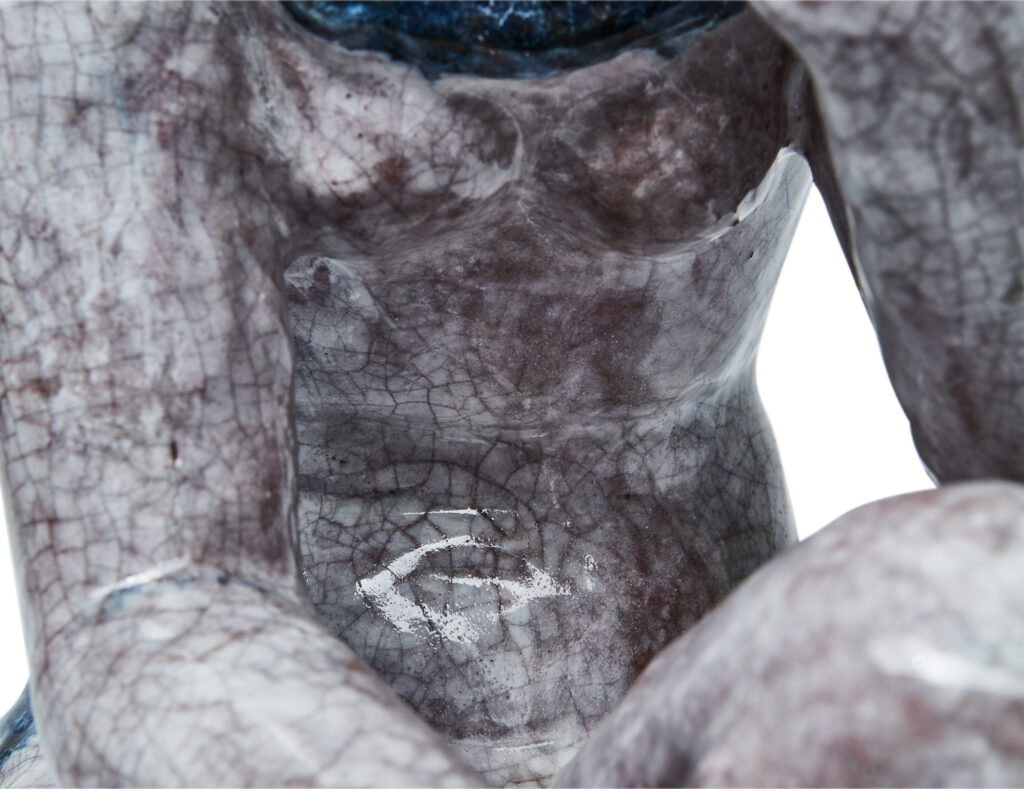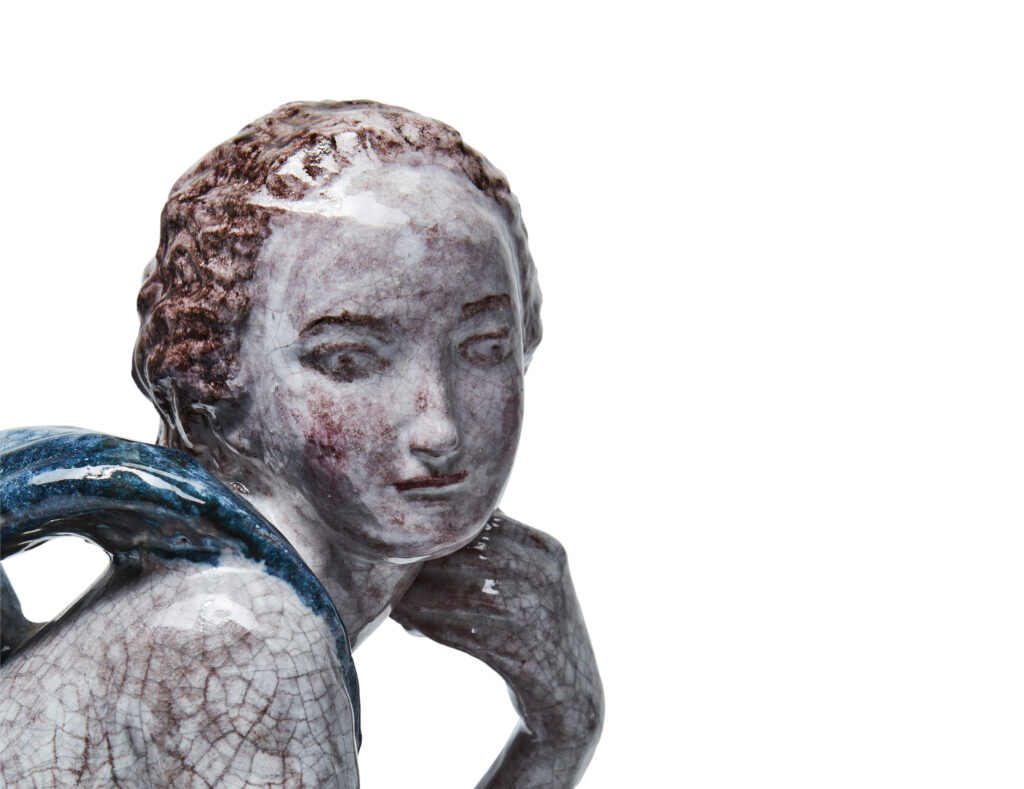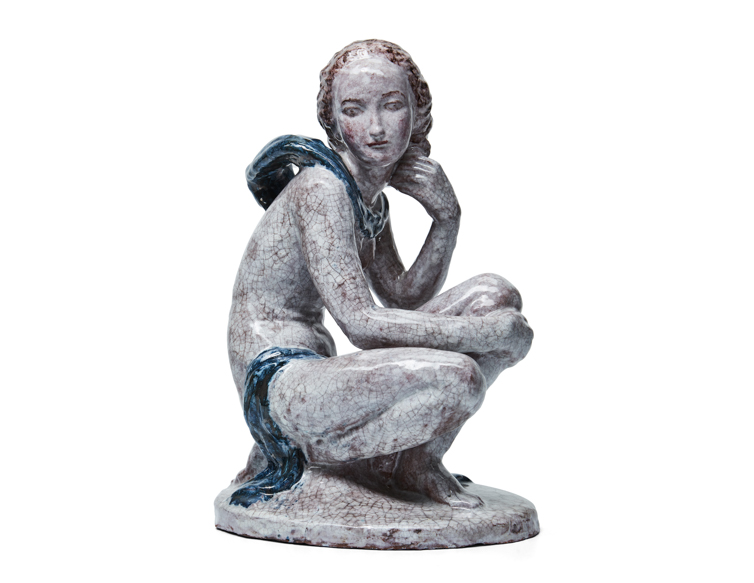Emilie Schleiss-Simandl – Sitting nude with blue scarf
Emilie Schleiss-Simandl (1876–1948) was a talented Austrian sculptor and ceramist, best known for her majolica works at the renowned Gmünder Keramik factory in Gmunden, Austria. Her artistic career took place during a period when Vienna and its surroundings played a significant role in the development of applied arts and the Jugendstil movement. This movement, also known as the Vienna Secession, was characterized by an emphasis on organic forms, elegant lines, and an innovative approach to traditional art forms. Schleiss-Simandl’s work closely aligned with this style, skillfully portraying the human body and nature in an aesthetic and refined manner.
Emilie Schleiss-Simandl received her education at the Kunstgewerbeschule in Vienna, the famous Viennese School of Applied Arts, where many renowned artists and designers, such as Koloman Moser and Josef Hoffmann, studied or taught. This institution was a hub for avant-garde art in Vienna and played a key role in the renewal of Austrian art. Influenced by her education and the artistic climate in Vienna, Schleiss-Simandl developed a particular affinity for the Jugendstil style and the refined techniques associated with it.
Her work at Gmünder Keramik provided her with the opportunity to further develop and express this style through ceramics and majolica, giving her pieces a unique brilliance and vibrancy. Her choice to work with Gmünder Keramik was no coincidence; the ceramics factory was renowned for its high-quality and innovative designs and was popular among artists who sought to experiment with materials and techniques.
Her creations, including the sculpture of the seated nude woman with a blue shawl, are refined and delicate works reflecting her artistic vision and the influences of her education. This specific sculpture, part of the collection of Fritz and Hermi Schedlmayer and exhibited at the Leopold Museum in Vienna, is an excellent example of her ability to combine form, color, and brilliance in an artwork that is both timeless and symbolic of Viennese art traditions. Her works are admired not only for their aesthetic beauty but also for embodying the heritage and artistic spirit of early 20th-century Vienna.
